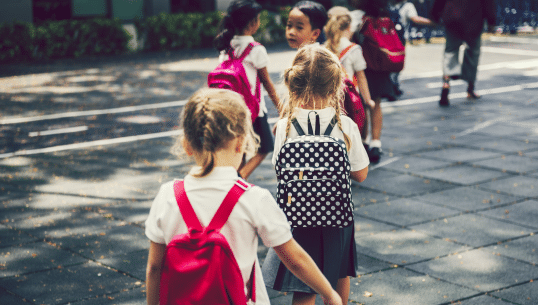
Traditions feel good. It is why we sing songs that we know well, why we go to the same store each week, and why we drive to work the same way even when we know there will be traffic. Similarly, there are many things we do in schools today because they have always been done that way. However, as children and society change, we are learning so much more about how students learn best. To meet their needs, we must be thoughtful and purposeful in our approach and flexible with our understanding of what constitutes student success.
Let’s examine how educators can redefine student success by looking at a common example: walking down the hallway. Using the tool of Interactive Modeling, school staff typically talk students through the steps of walking down the hallway by reminding them to be silent, place their hands behind their backs, keep their eyes forward, and so on. This list of expectations is one I hear and see often. After teaching in an elementary school for thirteen years, it was the expectation I had as well. But this is only one definition of success, and it’s one worth interrogating:
Question: what is the purpose of having students walk silently down hallways? Most often, schools share ideas such as:
This may all be true in certain situations. However, classrooms are not the silent places they once were. Students today are encouraged to socialize about academics. This point is reflected in one of the guiding principles of the Responsive Classroom approach: “Great cognitive growth comes from social interaction.” Now, since classrooms are social places, we use signals to gather the attention of students. What we have always done is not always what it makes sense to do now.
If students can walk down a hallway silently, with their arms at their sides or similarly controlled, they are considered successful and are often given positive feedback between academic learning periods:
The students who struggle with this one definition of success have a different experience. They may hear things such as:
Consider how these children go into their next learning experience. How are they feeling about themselves?
Some schools are looking at the big picture regarding children’s developmental needs and using that perspective to create new expectations. For example, when it comes to walking down the hallway, some schools:
Here are some steps you can take to redefine what student success looks like in your school community:
The first couple of months of the school year are a wonderful time to give our routines a good look and decide which are working and which are not. It is never too late to do this important work.
Gina Castelli is a Responsive Classroom Consulting Teacher.